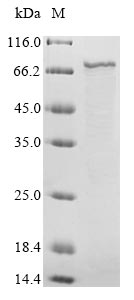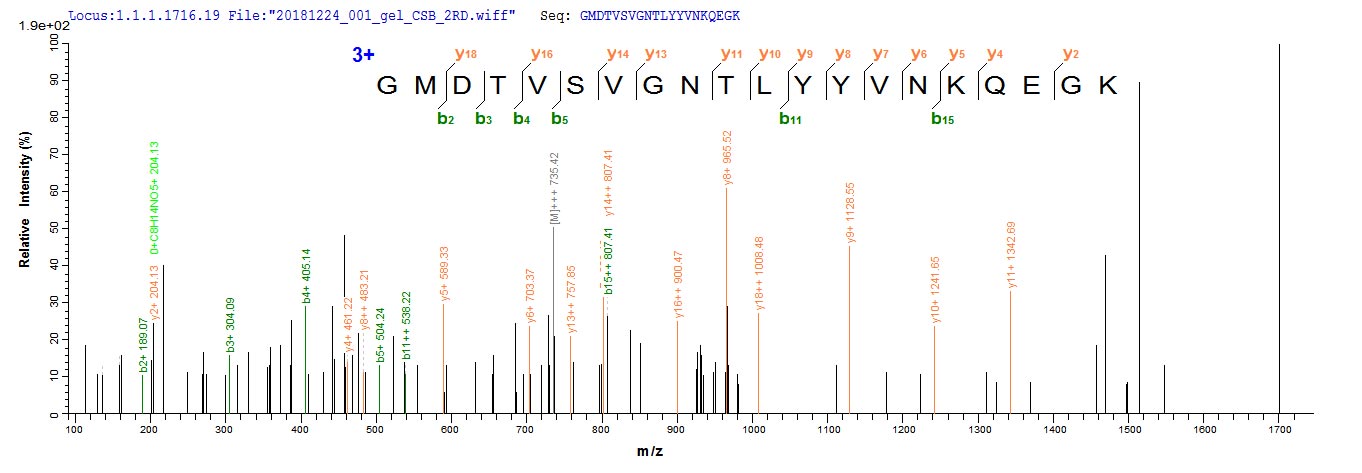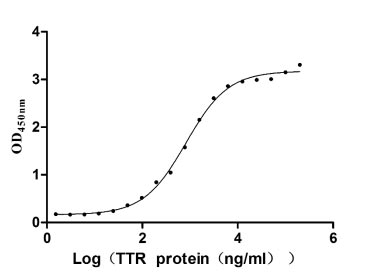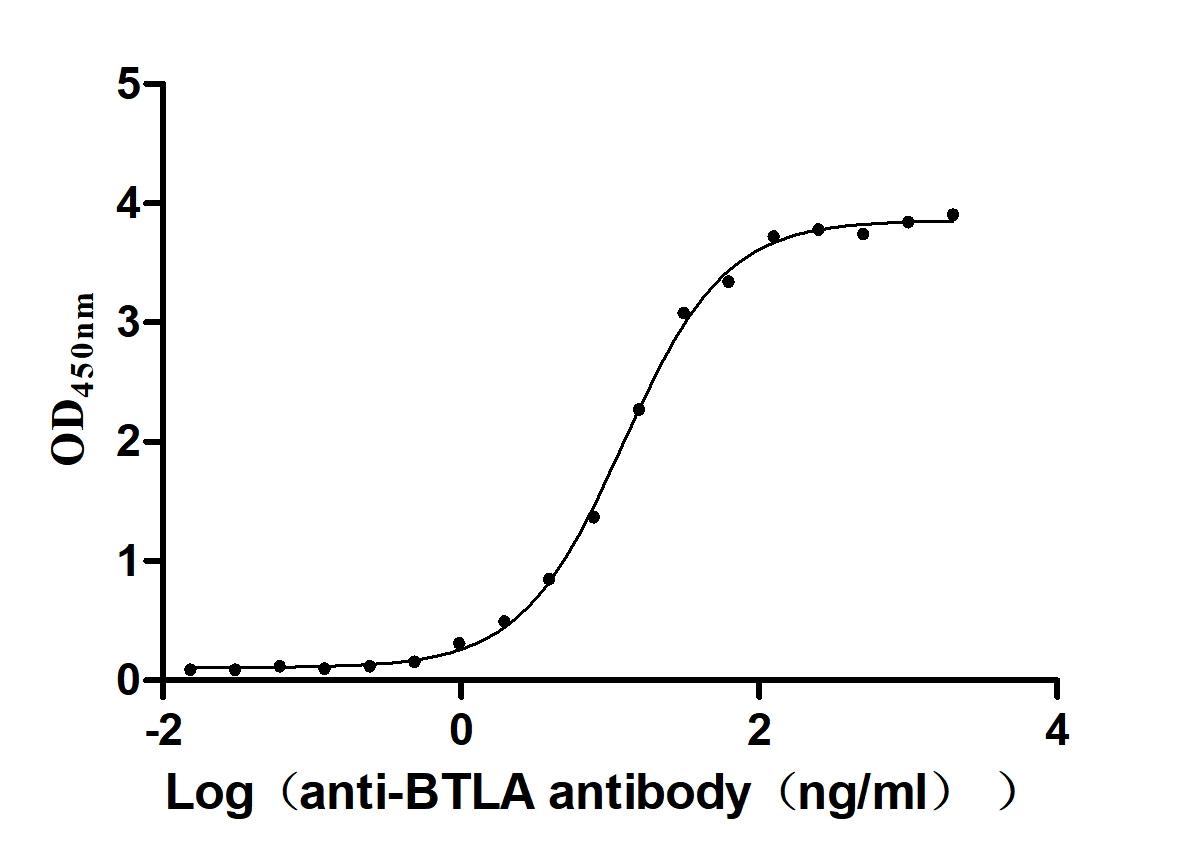Recombinant Human respiratory syncytial virus A Fusion glycoprotein F0 (F), partial
In Stock
产品详情
-
纯度:
Greater than 90% as determined by SDS-PAGE.
-
基因名:
F
-
Uniprot No.:
-
别名:
F; Fusion glycoprotein F0; Protein F) [Cleaved into: Fusion glycoprotein F2'; Interchain peptide; Fusion glycoprotein F2; Fusion glycoprotein F1]
-
种属:
Human respiratory syncytial virus A (strain A2)
-
蛋白长度:
Extracellular Domain
-
来源:
E.coli
-
分子量:
69.9 kDa
-
表达区域:
27-529aa
-
氨基酸序列
NITEEFYQSTCSAVSKGYLSALRTGWYTSVITIELSNIKENKCNGTDAKVKLIKQELDKYKNAVTELQLLMQSTPPTNNRARRELPRFMNYTLNNAKKTNVTLSKKRKRRFLGFLLGVGSAIASGVAVSKVLHLEGEVNKIKSALLSTNKAVVSLSNGVSVLTSKVLDLKNYIDKQLLPIVNKQSCSISNIETVIEFQQKNNRLLEITREFSVNAGVTTPVSTYMLTNSELLSLINDMPITNDQKKLMSNNVQIVRQQSYSIMSIIKEEVLAYVVQLPLYGVIDTPCWKLHTSPLCTTNTKEGSNICLTRTDRGWYCDNAGSVSFFPQAETCKVQSNRVFCDTMNSLTLPSEINLCNVDIFNPKYDCKIMTSKTDVSSSVITSLGAIVSCYGKTKCTASNKNRGIIKTFSNGCDYVSNKGMDTVSVGNTLYYVNKQEGKSLYVKGEPIINFYDPLVFPSDEFDASISQVNEKINQSLAFIRKSDELLHNVNAGKSTTNIMITT
Note: The complete sequence including tag sequence, target protein sequence and linker sequence could be provided upon request.
-
蛋白标签:
N-terminal 6xHis-B2M-tagged
-
产品提供形式:
Liquid or Lyophilized powder
Note: We will preferentially ship the format that we have in stock, however, if you have any special requirement for the format, please remark your requirement when placing the order, we will prepare according to your demand.
-
缓冲液:
Tris-based buffer,50% glycerol
-
储存条件:
Store at -20°C/-80°C upon receipt, aliquoting is necessary for
mutiple use. Avoid repeated freeze-thaw cycles.
-
保质期:
The shelf life is related to many factors, storage state,
buffer ingredients, storage temperature and the stability of the protein
itself.
Generally, the shelf life of liquid form is 6 months at -20°C/-80°C. The
shelf life of lyophilized form is 12 months at -20°C/-80°C.
-
货期:
3-7 business days
-
注意事项:
Repeated freezing and thawing is not recommended. Store working aliquots at 4°C for up to one week.
-
产品描述:
In the production of recombinant hRSV F protein, the gene for F (E.coli) was cloned into a vector and expressed as F protein in E.coli. The plasmids with the copy of F, or the expression vector, were often used to enhance gene expression. Every step of production was undergone with a strict QC system. N-terminal 6xHis-B2M tag was used in the process. The purity is 90% determined by SDS-PAGE.F is synthesized as a precursor (F0) that must be proteolytically cleaved at polybasic residues, to generate the biologically active forms (F1 and F2). The F1 polypeptide exposes a fusion peptide, whose , ...
显示更多
-
Datasheet & COA:
Please contact us to get it.
靶点详情
-
功能:
Inactive precursor that is cleaved at two sites by a furin-like protease to give rise to the mature F1 and F2 fusion glycoproteins.; Class I viral fusion protein. Under the current model, the protein has at least 3 conformational states: pre-fusion native state, pre-hairpin intermediate state, and post-fusion hairpin state. During viral and plasma cell membrane fusion, the coiled coil regions assume a trimer-of-hairpins structure, positioning the fusion peptide in close proximity to the C-terminal region of the ectodomain. The formation of this ...
显示更多
-
亚细胞定位:
[Fusion glycoprotein F0]: Host Golgi apparatus membrane; Single-pass membrane protein.; [Fusion glycoprotein F1]: Virion membrane; Single-pass type I membrane protein. Host cell membrane; Single-pass membrane protein.; [Fusion glycoprotein F2]: Virion membrane. Host cell membrane.
-
蛋白家族:
Paramyxoviruses fusion glycoprotein family
Most popular with customers






















